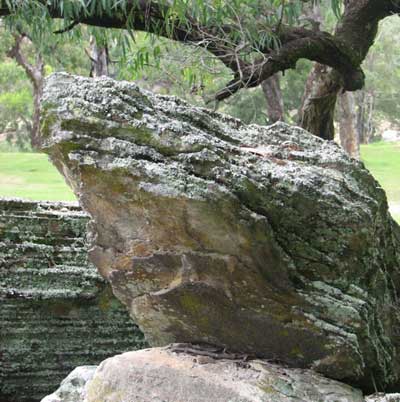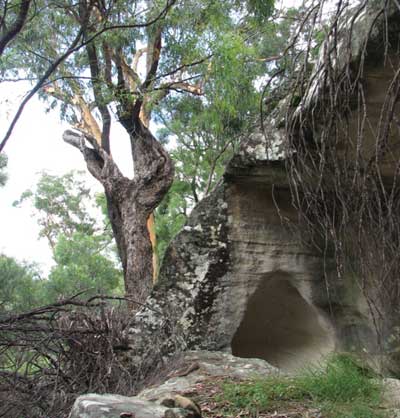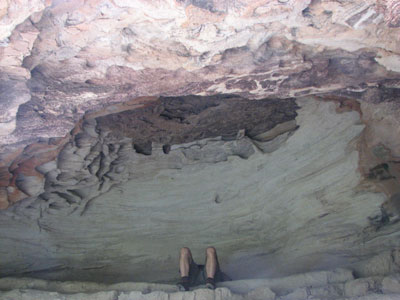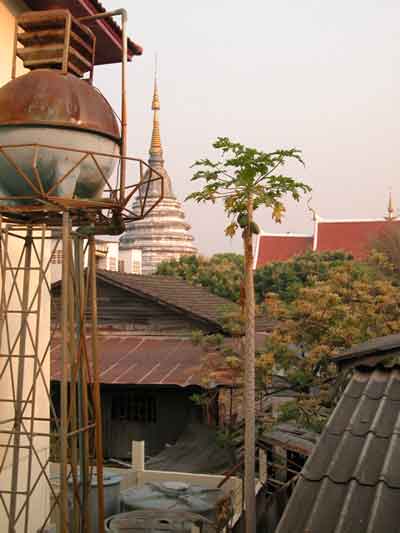
This is the view from the cool tiled haven of our room in the great value guesthouse, Safe House.
In the old walled city of Chiang Mai in northern Thailand, the gold and mirror mosaics of the wat and chedi spires jostle for sky space with the bright scalloped reds of temple tiles, the rusting browns of water tanks and corrugated iron roofs, and the greys of untreated timber and asbestos roofing.
Threaded amongst them is the green of trees: papaws and flowering mangoes and wide spreading trees I cannot name, except for the sacred Bodhi tree with its heart-shaped leaves. This is the shape of the wind-catchers that hang below the small temple bells ting-tinging from the chests of the finial creatures I see everywhere.
I heard the bells tinging often; I brought one at the markets and now it hangs on my verandah, giving me tings that are pure Thailand for me.
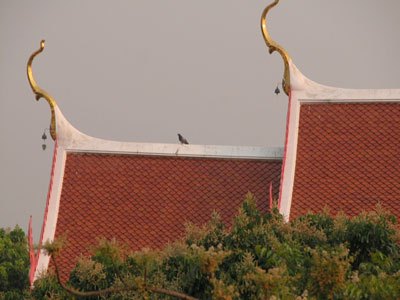
I didn’t find out what they represent, but they seemed familiar; then I realised it was Michael Leunig’s Mr Curly I was thinking of, with no disrespect to either.
Safe House Court Guesthouse is at 178 Ratchapakhinai Road, very central, very clean, very cheap. It has a good Thai restaurant in the tree-shaded front courtyard, and life was made much easier for us by the delightful Yo in reception, a knowledgeable and helpful young man with fluent English.
We also found it useful to be opposite a well-known landmark, Wat U Mong, for giving directions and thus getting home in tuk-tuks and sawng-thaews (open-air mini-cabs and ute-buses).
